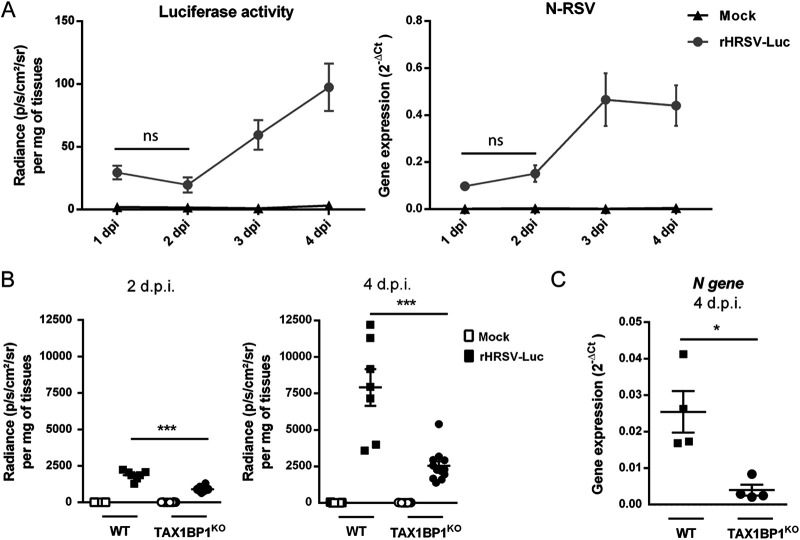FIG 3.
TAX1BP1-deficient mice infected with RSV present reduced virus replication in the lungs. (A) Kinetics of RSV infection in 129 mice. Wild-type (WT) strain 129 mice were infected with the HEp-2 supernatant (mock) (n = 1) or rHRSV-Luc (n = 4). (Left) Luciferase activity associated with viral replication was measured at different days postinfection (dpi) in lung lysates by quantification of photon emission (radiance in photons per second per square centimeter per steradian) and normalized to the amount of lysed tissue. (Right) In parallel, N-RSV gene expression was measured in the lung lysates by RT-qPCR and calculated by the formula 2−ΔCT, where ΔCT = CTN-RSV − CTHPRT. Data are means ± SEM. *, P < 0.05; ns, not significant. (B) WT or TAX1BP1KO 129 mice were infected with the HEp-2 supernatant (mock) or rHRSV-Luc. Luciferase activity associated with viral replication was measured at 2 or 4 dpi (left and right, respectively) in lung lysates by quantification of photon emission (radiance in photons per second per square centimeter per steradian) and normalized to the amount of lysed tissue. Data are means ± SEM from two independent experiments with 7 RSV-infected WT mice and 11 RSV-infected TAX1BP1KO mice. (C) Quantification of N-RSV gene expression at 4 dpi in RSV-infected WT or TAX1BP1KO mice (n = 4). N-RSV gene expression was measured in the lung lysates by RT-qPCR and calculated by the formula 2−ΔCT, where ΔCT = CTN-RSV − CTHPRT (right). Data are means ± SEM. *, P < 0.05.

